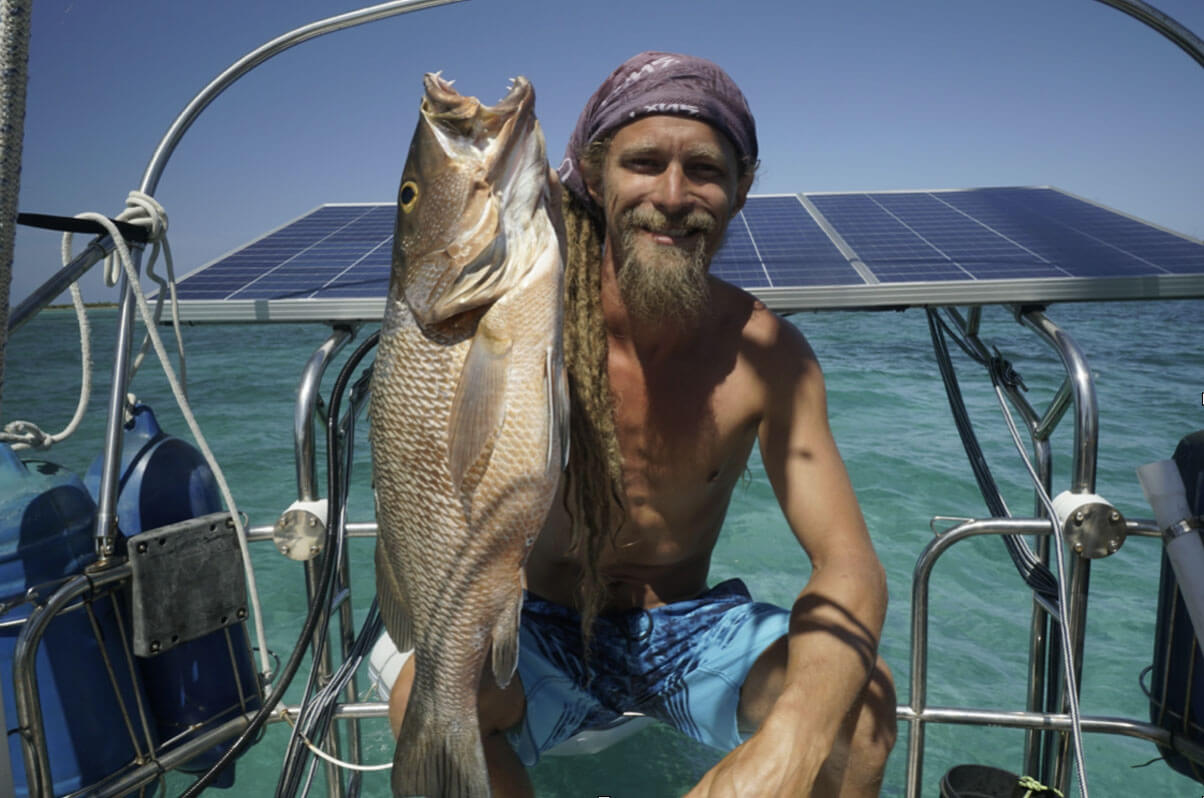
Spearfishing has quickly become one of my favorite activities to do while visiting the Bahamas. I can spend hours in the water looking for my favorite fish to eat. Before I know it the sun is setting, I’m exhausted, and I’ve got a bucket of fish for dinner. It is so rewarding providing food for my family all while having fun and exploring new areas of reef. In this guide I hope to provide you with some simple tricks to help you advance your spear pole game and bring home some delicious fish all while exploring the beautiful underwater world in crystal clear water.
Things you will need.
A pole spear or Hawaiian sling
Each has its pros and cons but I’m used to a pole spear so I’ll be writing about them. Get something at least 6 feet. The shorter ones are mainly only good for lionfish. The longer the pole the more range.
Spear tip
Lots of different kinds to choose from but I like slip tips for fish and floppers for lobster or crawfish. The slip tip gives the bigger fish some room to swim without bending your spear so much but you can use a barbed tip or flopper instead.
Mask and snorkel
Find one that fits you comfortably with no leaks. A lighter will make quick work of the film on the glass that makes them fog up.
Fins
Any fins will do but you will find it easier with larger freediving fins as it takes less effort to go down
Wetsuit or Rash guard
Sure the water is warm in the Bahamas but you will still want some protection if you brush up against some fire coral
Weight belt
Helps you balance your buoyancy so you don’t keep bobbing back to the surface. Depending on how thick your wetsuit is you will need more or less weight
A Bucket
Keep the blood and mess in the bucket and not in your dingy
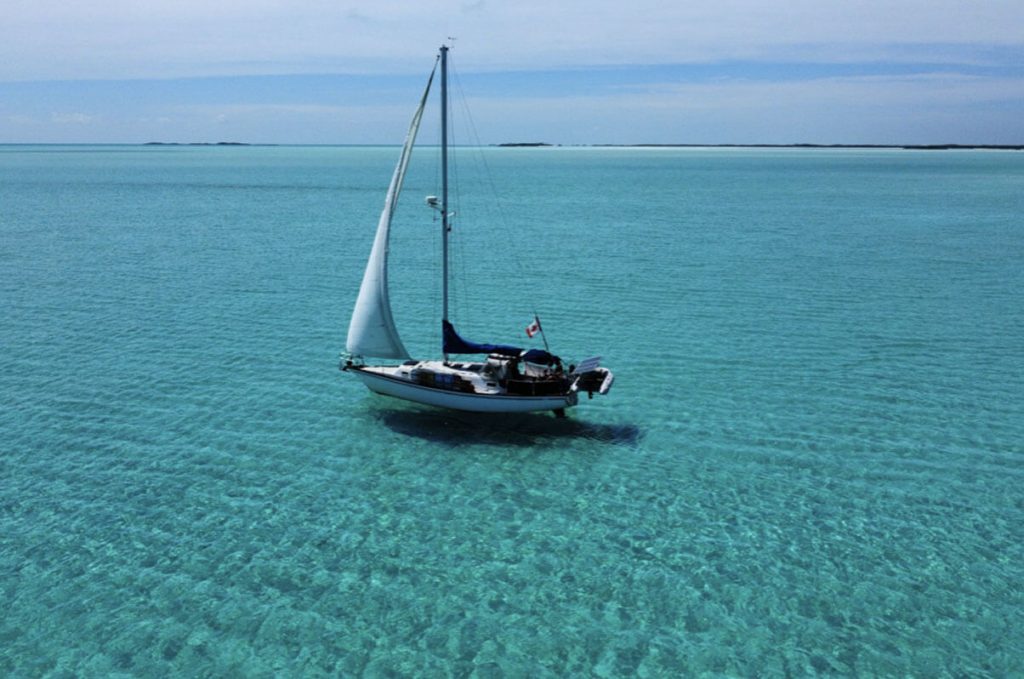
So you have your gear and you have just arrived at your favorite anchorage in the Bahamas. Where do you go? Well your charts that brought you safely to your anchorage can also be used to find some nice coral heads nearby. Google earth is also a great resource to help you find some nice dark patches that might be worth scouting. I have found in general the exposed side (east) of the islands tends to have more options and less skittish fish as they are not fished as often. When it’s too rough for adventures on the outside you can also check out the cuts during slack tide or any smaller heads on the protected side. While looking for corals from the surface look for nice dark spots and since the water is so clear you can often tell if it’s got some nice formations for fish to hide as you get closer. If not just throw your mask on and poke your head in the water. (engine in neutral of course)
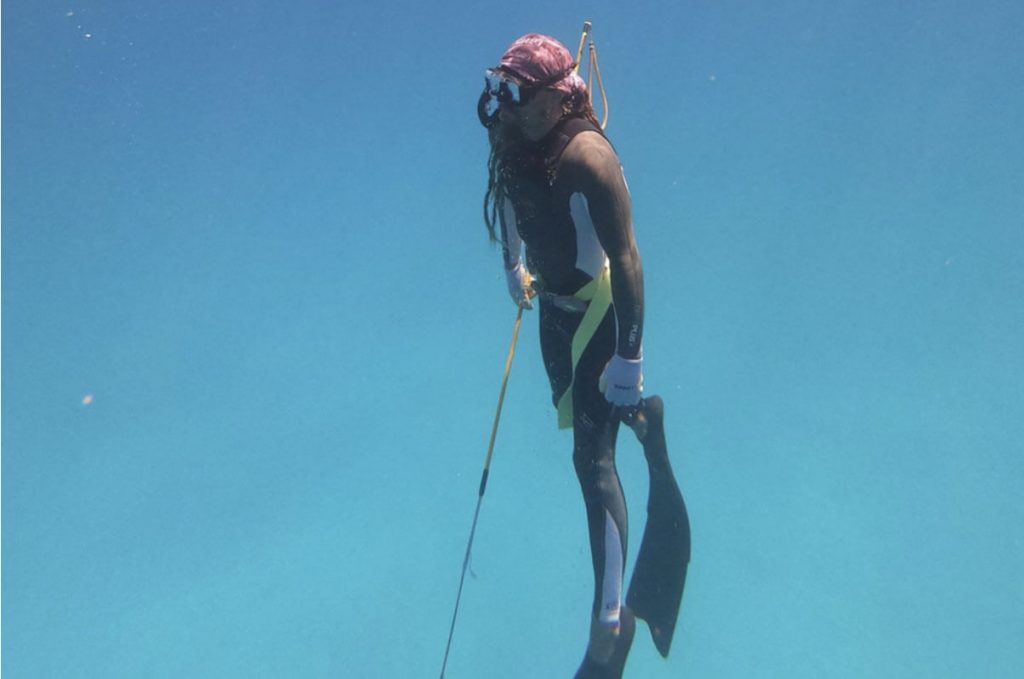
Now that you have found a spot you like, put on your gear and hop in. Normally I’m looking to see how many fish are on this section of reef. This can take some time since there are often lots of hiding spots and it may take a few dives to find something you would like to shoot.
How do you know if that nice fish under the rock is good to eat? After you have seen a few fish or even before you go out try and identify what they are. After all, it’s no good shooting something you can’t eat. There are lots of paper guides as well as online guides to help you identify them. But I like finding out what I think the fish was using Google to search for underwater pictures of those fish. Start with an overall search for Bahamas fish and then you can narrow your search down as you notice similar features to the fish you saw. Sometimes the books and charts have the colors different from what they look like under the surface.
Now that you have a good idea what a few of the fish look like underwater you can start hunting. When you’re starting out don’t be afraid to practice on smaller fish. They are still good to eat and will have less chances of cicatera (a fish poisoning from larger reef dwelling fish). That said, keep in mind that everything looks 1/3 bigger underwater so if you think it might be too small underwater it will be tiny when you bring it up.
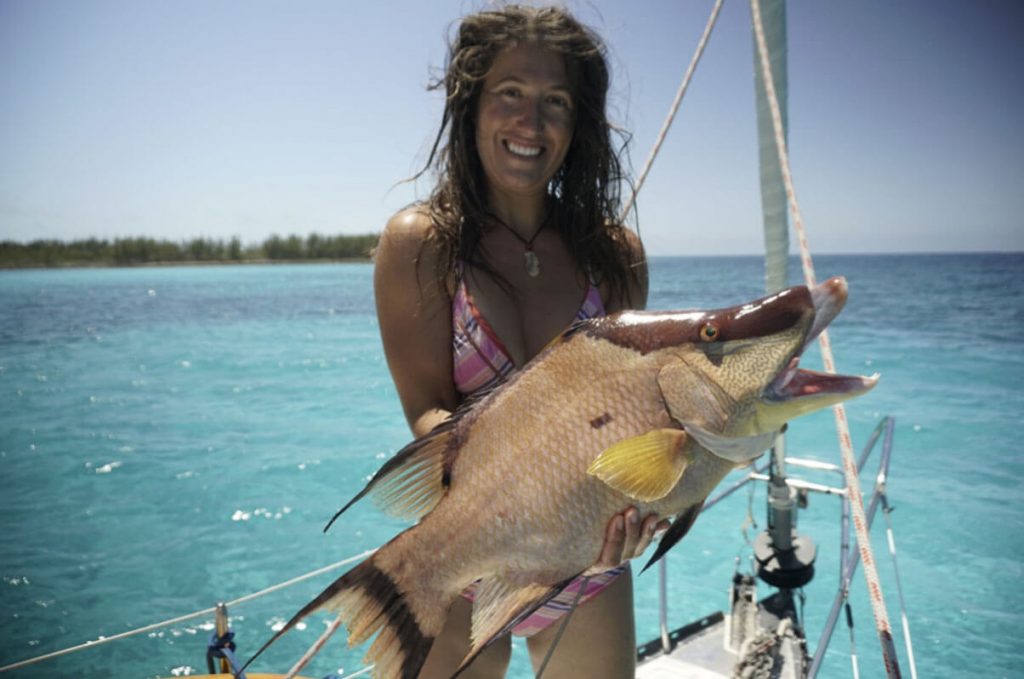
If you spot something from the surface, take your time and try to relax any excitement you might have. Take some nice deep breaths in and out on the surface watching the fish. When you are ready to dive, pull your spear to about half strength with the band between your thumb and index finger, take your final deep breath in, fold at the waist and raise one leg to dive. Try not to kick your fins until they are under the water and take your snorkel out of your mouth. As your fins enter the water equalize your ears and start to kick. Stay relaxed and take your time without any sudden movements. As you get closer move your hand even further down the spear to its fully cocked position and give it a couple turns so the band is twisted around the pole some. This will help it shoot straighter. As you close in on the fish, move slowly while pointing your spear towards it. Do not forget to equalize every few feet, don’t wait until you feel pressure in your ears. Finally comes the most important part, wait for a good shot. You want to aim right behind the gills and slightly up from the center. Try and get down to the same level as the fish to help give you the best shot. If the fish is swimming away don’t take a bad shot as you will likely miss and spook him. Be patient and you will get a nice side on shot. Sometimes waiting that extra little bit longer at the bottom will have the fish swimming back to you instead of away.
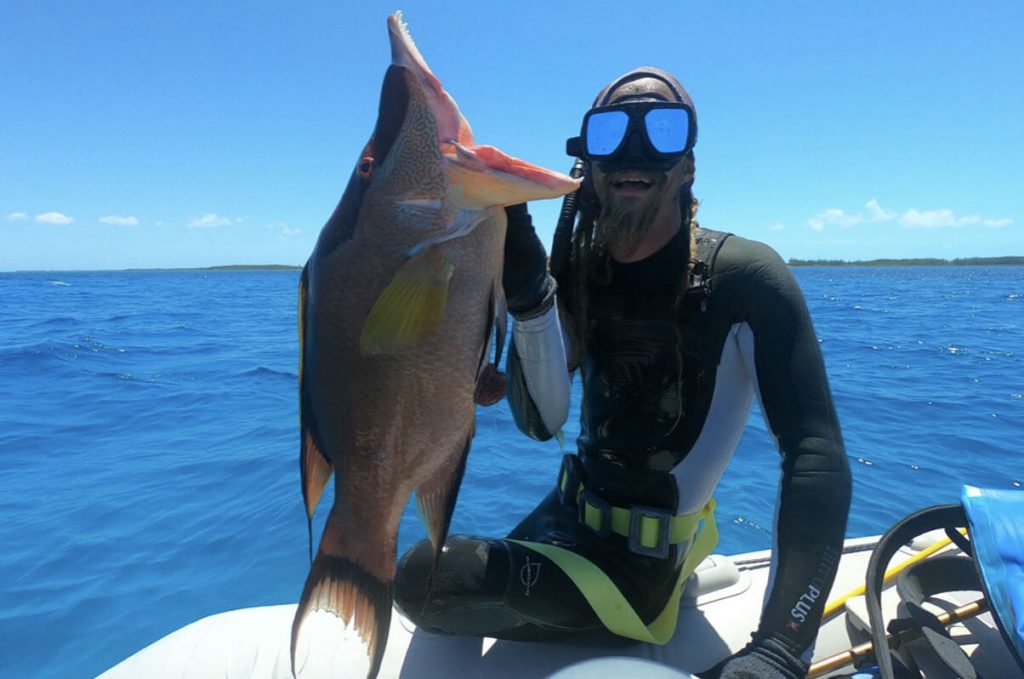
Some types of fish are skittish while others are curious. Porgy’s for example are often tricky as you need to keep them interested in you by throwing sand up while waiting at the bottom hoping to lure them in or diving directly above them and taking a much harder shot from above. While hogfish seem to always give you a nice side on shot while they look at you wondering what you are. Some groupers stare at you from just outside their hiding hole letting you get quite close while dog and schoolmaster snapper will dart in and out of holes checking you out before hiding again. Queen triggerfish will almost dare you to shoot them while swimming around you showing off it’s colors.
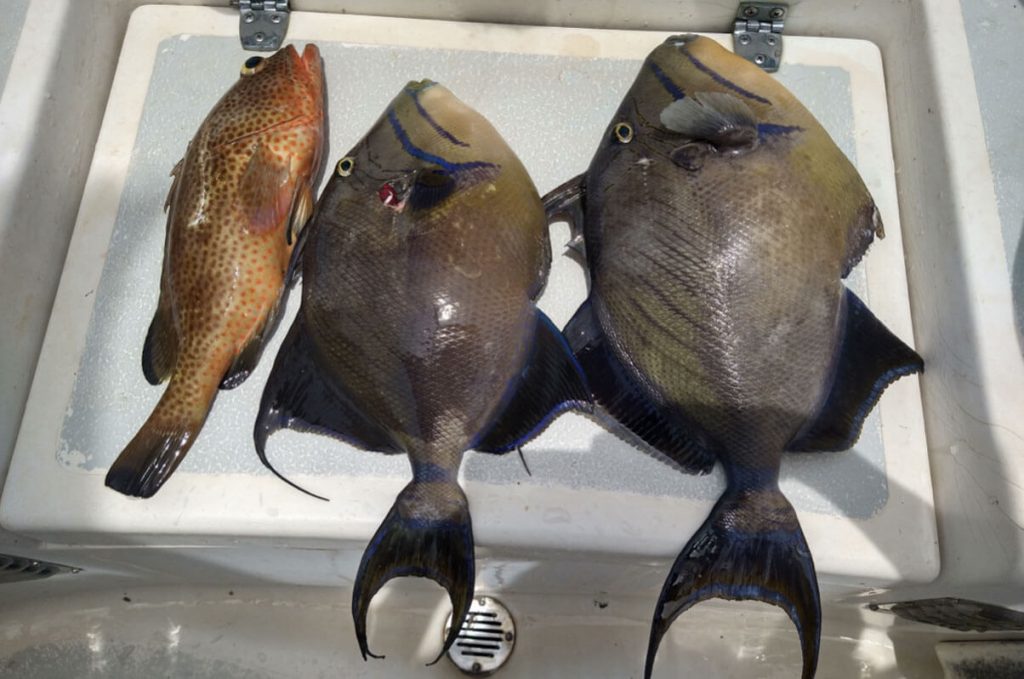
Perfect fish to practice on are the ones that don’t move a lot. Glass eyed snapper are small snapper that hide in dark holes but they don’t move much from their hiding spot even if you happen to miss.
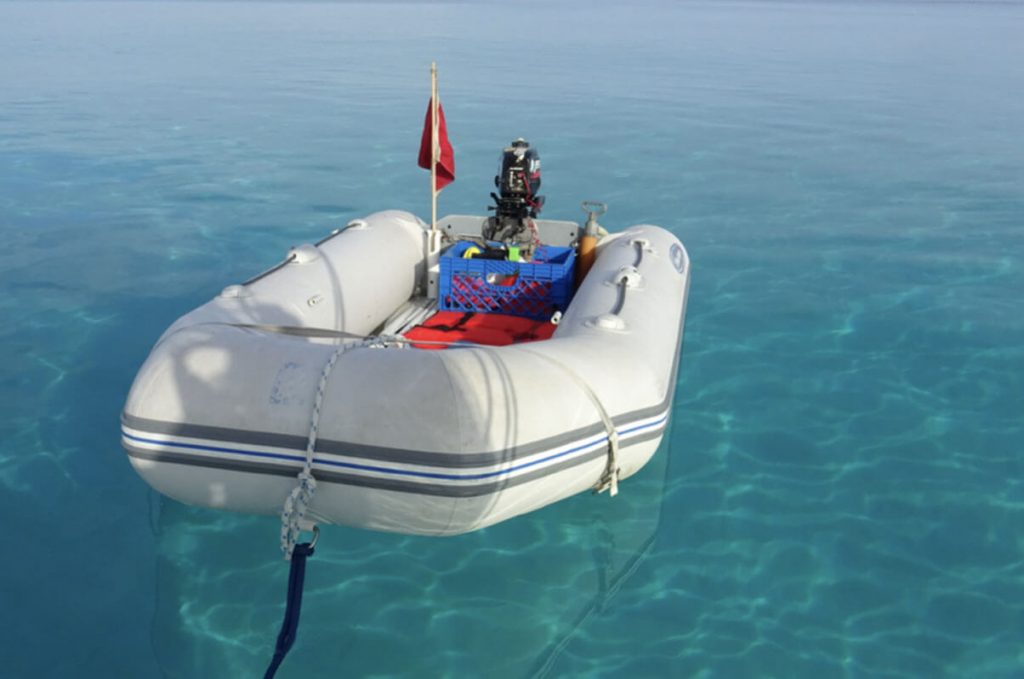
Lionfish also stay in one area under ledges and have the added bonus of being a nuisance fish that is invasive in the Bahamas. Big or small I like to shoot them all to help keep their numbers down. They are tasty and easy to fillet after you remove the poisonous barbs. If they are too small to eat, poking holes in them helps the nurse sharks eat them as well as being great accuracy practice.
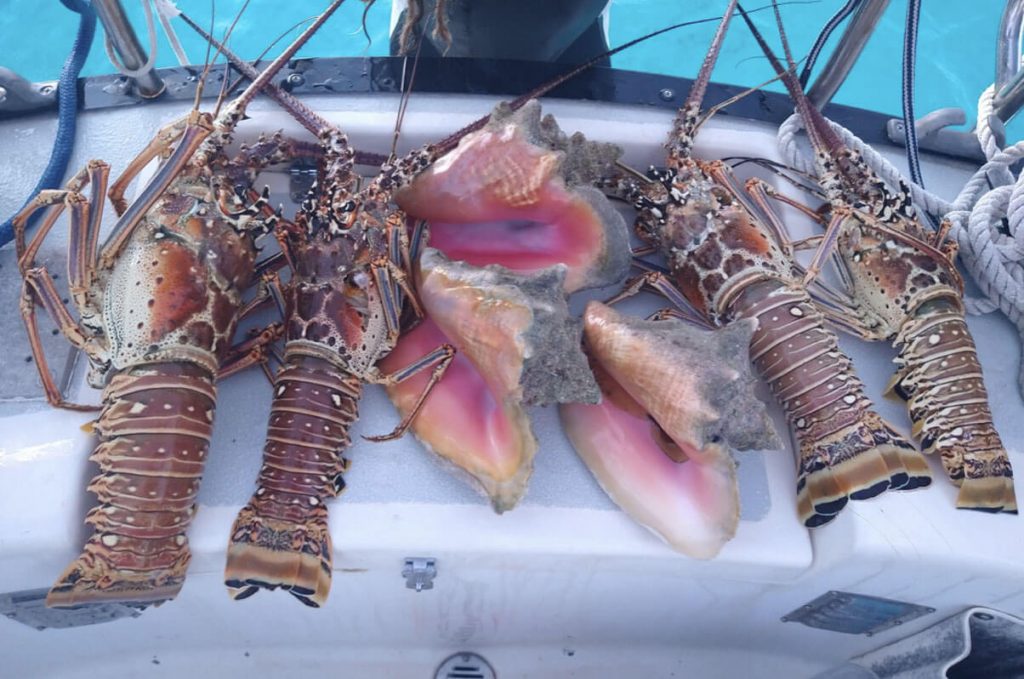
Crawfish are great to spear when in season but make sure to check under their tails for orange or brownish eggs before using your spear. You can use your spear under their tails to tickle them out of their hiding place and see if they have eggs. Keep your eyes peeled for their telltale antennas sticking out of holes and ledges to help you locate them. For the larger ones don’t forget to harvest their legs and antenna knuckles as they have a lot of meat in them.
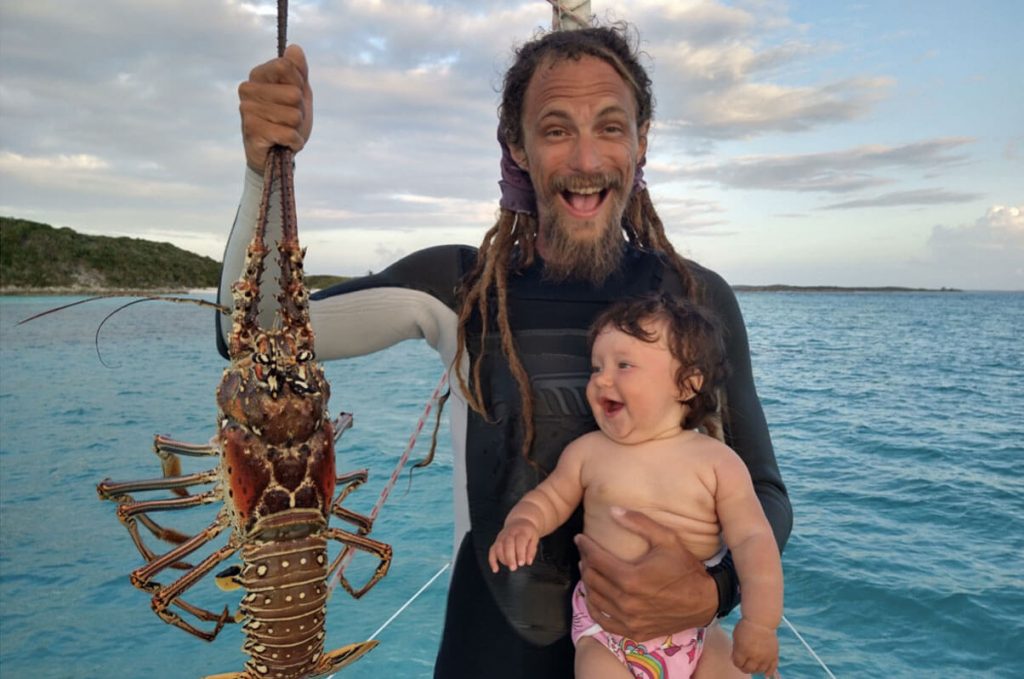
On the note of sharks, some areas do have sharks that have lost some of the fear they once had towards humans. Now some see an easy meal when a fish is on a spear. Keeping the dingy closeby makes it harder for the sharks to grab your meal and bringing the fish closer to you instead of on the end of a 7 foot spear makes them think twice about getting too close. That said 90 percent of the sharks keep their distance and are just looking for an easy handout. Keep your eyes on them and if you feel uncomfortable just get out of the water. Some signs that they might be getting too aggressive are if they move up and down the water column quickly with their pectoral fins pointed downward. Also as their numbers increase and you start to have trouble keeping an eye on them it tends to be harder to fish and they sometimes come in too close for comfort. You can always go find another coral head to fish as no fish is worth an accidental shark bite.
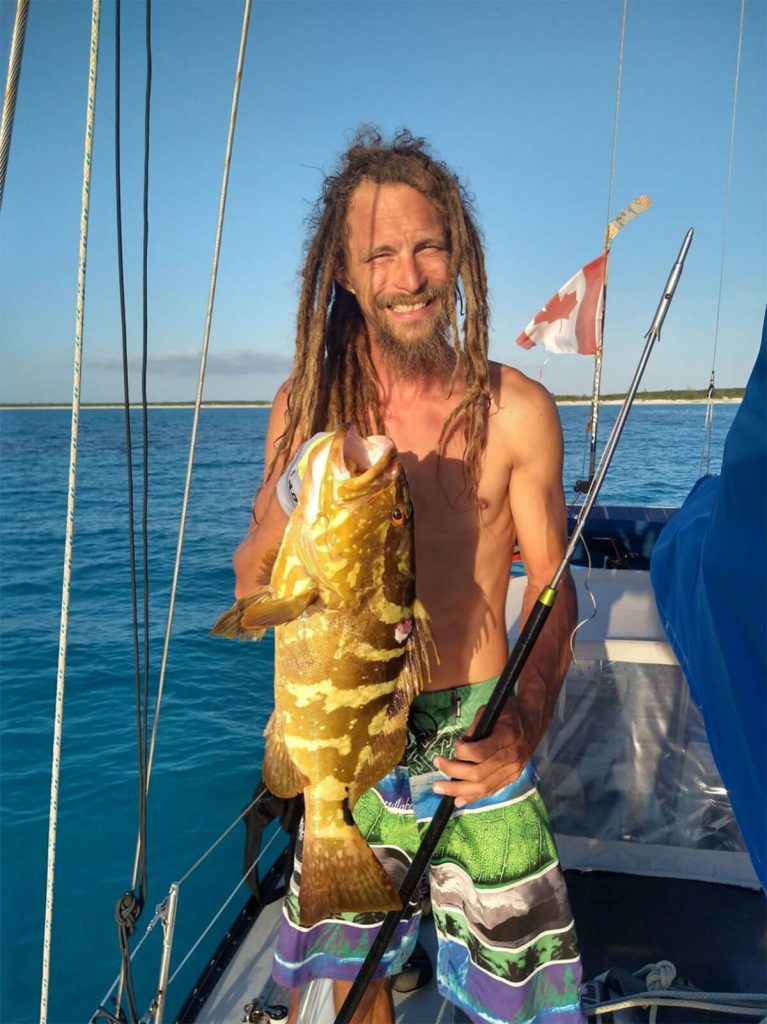
Make sure to brush up on any local laws avoiding fishing in parks and making sure crawfish and Nassau grouper are in season before going out.
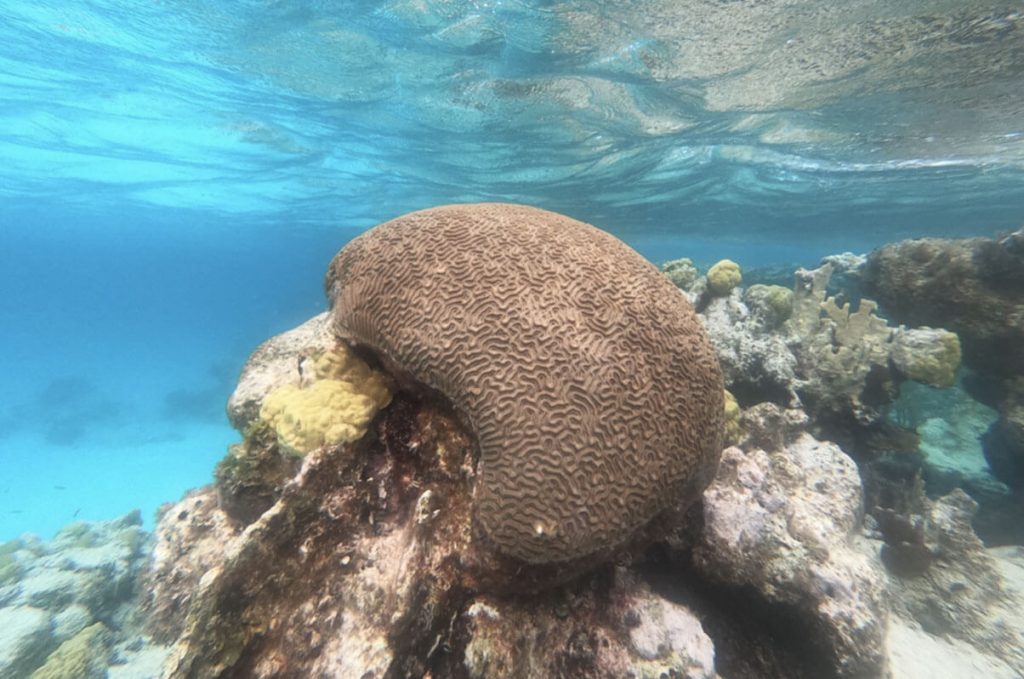
Now that you have speared yourself some supper you can share your catch and make some new friends in your anchorage while sharing all your stories of the amazing creatures you saw and coral formation you swam in. Of course you could fill your freezer but everyone loves a potluck and bonfire with some fresh seafood. Someone just might share some secret spots they have been to.
Happy Spearing.
Cory Bertrand
Cory and Alex share their adventure with weekly videos on their YouTube channel “Wildly Intrepid Sailing” and share stories on their website www.wildlyintrepid.com . Their dream is to travel the world and to live without any regrets.
